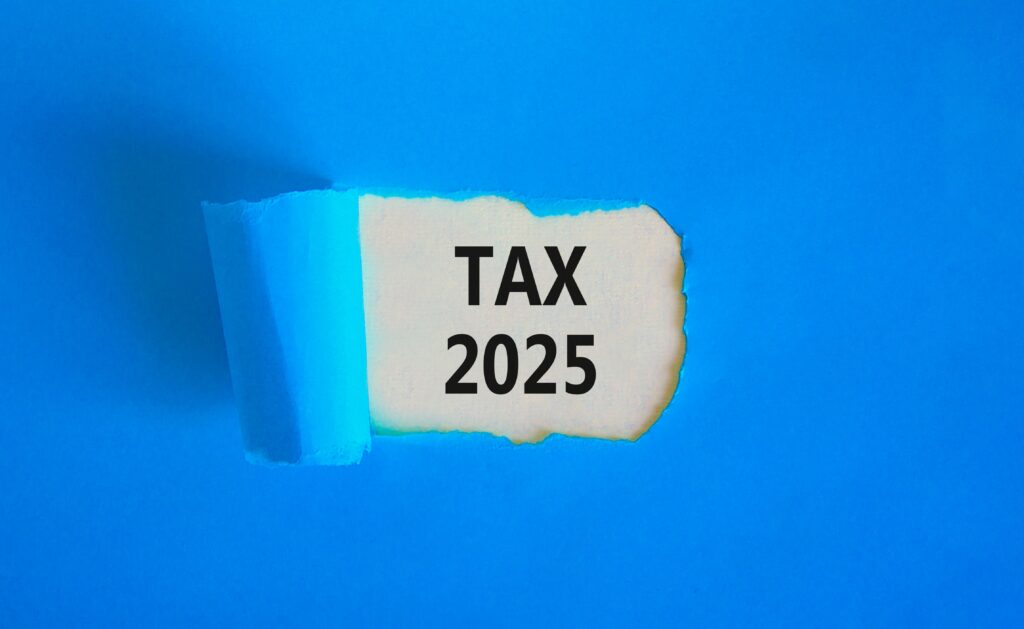In his acceptance speech, President-elect Donald Trump placed a heavy emphasis on the need to rebuild the nation’s infrastructure. In theory, expanded investments in our nation’s infrastructure could generate wide support among the public and within Congress. And yet Congressional negotiations on this issue have repeatedly broken down because of disagreements over how to fund those investments. Unfortunately, a flawed proposal for new funding put forth by Mr. Trump fails to offer a realistic path forward.
For context, the most straightforward way to boost infrastructure funding would be to raise the nation’s increasingly outdated gas tax rate. While asphalt, machinery, labor, and other infrastructure inputs have predictably grown in cost over the last 23 years, the nation’s 18.4-cent gas tax rate has not budged during that time.[1] The result is a large and growing gap between infrastructure revenues and our nation’s infrastructure needs.
State-level lawmakers of all political persuasions have come to recognize this flaw in their own gas taxes and have addressed it through gas tax increases or reforms as nineteen states and counting have enacted gas tax changes since 2013.[2] But with few exceptions, tax-averse federal lawmakers have preferred to forgo a contentious vote on the gas tax in favor of an odd assortment of short-term funding schemes.[3] Mr. Trump’s proposal to fund our nation’s infrastructure with a new federal tax credit is simply a new take on this old tradition.[4]
Mr. Trump’s advisors have proposed offering private investors a tax credit that would wipe out 82 percent of the up-front costs associated with building toll roads or other income-generating infrastructure projects. They claim that offering $137 billion in federal credits would spur $1 trillion in infrastructure investments, and that the economic growth created by those investments would ultimately make the plan “fully revenue neutral.”
There are several problems with this approach.
1. Most projects will go unfunded. This proposal only attempts to address the small subset of infrastructure projects that could generate a potential profit for private investors. While this may be successful in causing some companies to build new toll roads, water systems, or sports stadiums, private companies will not find the vast majority of infrastructure projects (e.g., filling potholes, replacing bridges, or expanding urban bus routes) to be profitable undertakings.[5]
2. Some of these credits will inevitably be wasted on projects that would have been undertaken anyway. For these credits to be effective in launching new infrastructure projects, they would need to be reserved only for those projects that are on the edge of profitability. Identifying which projects truly need this credit to make them a reality is not an easy task. As with most types of tax incentives, some investors will enjoy windfall benefits at the public’s expense.[6]
3. These credits will not pay for themselves, contrary to the claims of Mr. Trump’s advisors. As mentioned above, some of the projects subsidized with these credits would have been pursued even in the absence of the credit. Moreover, some of the people working on these projects would likely have found employment elsewhere even if these projects had not been undertaken. It is therefore a mistake to claim that all the income generated by these projects (and then taxed by the federal government) would be nonexistent without these credits, as Mr. Trump’s advisors seem to have done. Notably, both the Heritage Foundation and the Center on Budget and Policy Priorities—two organizations that disagree on many subjects—are skeptical that these credits would generate more revenue than their costs.[7]
4. Designing these subsidies as tax credits needlessly limits the potential pool of investors. To make use of these federal income tax credits, potential investors will need to have federal income tax liability against which those credits could be applied. But as Dr. David Levinson of the University of Minnesota explains, “If you look at the major investors in existing quasi-privatized US toll roads, they tend to be international players and pension funds.”[8] In other words, many of the investors interested in US infrastructure projects would be barred from participating in this credit scheme, and by limiting the potential pool of investors the ultimate cost of the projects could be driven higher.
5. Designing these subsidies as tax credits is dishonest budgeting. The notion of cutting taxes to fund infrastructure projects turns the conventional rules of budgeting on their head. When the federal government agrees to cover 82 percent of the initial equity investment in an infrastructure project, this clearly amounts to a form of government spending. The decision to describe this 82 percent match as a “tax credit” is political spin designed to attract lawmakers that would rather vote for a $137 billion federal “tax cut” than a $137 billion boost in the federal government spending—even if the two are functionally equivalent.
6. Encouraging expanded private investment in our nation’s infrastructure is fraught with pitfalls. Of the fourteen privately financed highway projects completed in the last 25 years, three declared bankruptcy and a fourth required a public buyout.[9] Even when these projects are successful from the perspective of the private investor, however, the public good may not always be served by its existence. Non-compete clauses, for example, can prevent states from alleviating traffic congestion if doing so would draw traffic away from existing private toll roads.[10]
7. Low interest rates make this a good time for publicly financed infrastructure projects. As The Wall Street Journal explains, “Historically low interest rates have made it very cheap for state and local governments to borrow directly on the municipal bond market, giving them less incentive to work with private funders.”[11] Nonetheless, Mr. Trump is proposing that public borrowing be avoided in favor of having private entities take on debt. This decision is rooted not in the economic realities of the moment, but in an ideological belief that more of the nation’s public infrastructure should be privatized.
8. This plan sidesteps the more challenging task of closing the long-run structural gap in the nation’s infrastructure budget. While a short-term infusion of funding could improve the nation’s infrastructure, this type of Band-Aid fix is less valuable than an ongoing reform that could bring infrastructure revenues and costs into alignment for the long run. At the depths of the Great Recession, there was a strong case to be made for providing an infusion of cash to put people to work on “shovel ready” projects. With the economy now in recovery and unemployment in the construction industry at lower levels, the rationale for continuing this type of short-term thinking has weakened.
9. Pairing this tax credit scheme with a repatriation holiday would make a flawed proposal worse. Mr. Trump’s advisors suggest that there may be a “synergistic interaction” between these infrastructure tax credits and an unrelated proposal to cut taxes for companies that have shifted their profits offshore. Using the example of a hypothetical company bringing $1 billion in earnings back to the US, his advisors explain how stacking these two tax benefits could potentially result in “no tax bill” for the company. In effect, the company would avoid $350 million in taxes that it would otherwise owe if its $1 billion in offshore profits were repatriated at the statutory 35 percent tax rate. Because much of that $1 billion would likely have been repatriated anyway, and because a repatriation holiday may encourage more companies to shift their earnings offshore in hopes that these holidays will become regular occurrences, the Joint Committee on Taxation (JCT) estimates that a repatriation holiday would actually lose revenue in the medium- and long-term.[12] Clearly, infrastructure investments cannot truly be “paid for” with a revenue losing tax cut for multinational corporations.
In sum, Mr. Trump’s infrastructure proposal is a short-term approach to a long-term problem. It would fail to fund many important infrastructure investments and would needlessly subsidize private investors for at least some projects that would have been undertaken even in the absence of this program. While expanded investments in infrastructure are clearly needed, this proposal is a deeply flawed approach to realizing that goal.
[1] “Inflation Drives Federal Gas Tax Down Almost 40%.” Tax Justice Blog. May 2015. Available at: http://www.taxjusticeblog.org/archive/2015/05/inflation_drives_federal_gas_t.php.
[2] “Looking Back at Four Years of Gas Tax Reforms.” Tax Justice Blog. October 2016. Available at: http://www.taxjusticeblog.org/archive/2016/10/looking_back_at_four_years_of.php.
[3] “Congress Searches the Couch Cushions for Road Funding Money.” Tax Justice Blog. November 2015. Available at: http://www.taxjusticeblog.org/archive/2015/11/congress_searches_the_couch_cu.php.
[4] “Trump Versus Clinton On Infrastructure.” An analysis by Wilbur Ross and Peter Navarro. October 2016. Available at: http://peternavarro.com/sitebuildercontent/sitebuilderfiles/infrastructurereport.pdf.
[5] “Donald Trump’s Infrastructure Plan Faces Speed Bumps.” The Wall Street Journal. November 11, 2016. Available at: http://www.wsj.com/articles/donald-trumps-infrastructure-plan-faces-speed-bumps-1478884989. “Trump’s Infrastructure Plan Could Be a Giant Sports Welfare Giveaway.” Vice Sports. November 23, 2016. Available at: https://sports.vice.com/en_us/article/trumps-infrastructure-plan-could-be-a-giant-sports-welfare-giveaway.
[6] “Tax Incentives: Costly for States, Drag on the Nation.” Institute on Taxation and Economic Policy. August 2013. Available at: https://itep.org/itep_reports/2013/08/tax-incentives-costly-for-states-drag-on-the-nation.php.
[7] “Donald Trump’s Infrastructure Plan Faces Speed Bumps.” The Wall Street Journal. November 11, 2016. Available at: http://www.wsj.com/articles/donald-trumps-infrastructure-plan-faces-speed-bumps-1478884989. “Trump’s infrastructure plan: Potholes or a smooth ride?.” USA Today. November 16, 2016. Available at: http://www.usatoday.com/story/money/2016/11/16/trumps-infrastructure-plan-potholes-smooth-ride/93890402/.
[8] “Donald Trump’s infrastructure plan wouldn’t actually fix America’s infrastructure problems.” Vox. November 18, 2016. Available at: http://www.vox.com/policy-and-politics/2016/11/16/13628382/donald-trump-infrastructure-plan.
[9] “The Status of the Highway Trust Fund and Options for Paying for Highway Spending.” Congressional Budget Office. June 2015. Available at: https://www.cbo.gov/sites/default/files/114th-congress-2015-2016/reports/50298-TransportationTestimony_1.pdf.
[10] “Trump’s infrastructure plan is not a simple public-private partnership plan, and won’t lead to much new investment.” Economic Policy Institute. November 22, 2016. Available at: http://www.epi.org/blog/trumps-infrastructure-plan-is-not-a-simple-public-private-partnership-plan-and-wont-lead-to-much-new-investment/.
[11] “Donald Trump’s Infrastructure Plan Faces Speed Bumps.” The Wall Street Journal. November 11, 2016. Available at: http://www.wsj.com/articles/donald-trumps-infrastructure-plan-faces-speed-bumps-1478884989.
[12] Barthold, Thomas A. Letter to Senator Orrin Hatch. Joint Committee on Taxation. June 6, 2014. Available at: http://www.hatch.senate.gov/public/_cache/files/1b24c4cf-6005-4a4e-bab7-3d9e3820c509/JCT%206-6-14.pdf.





